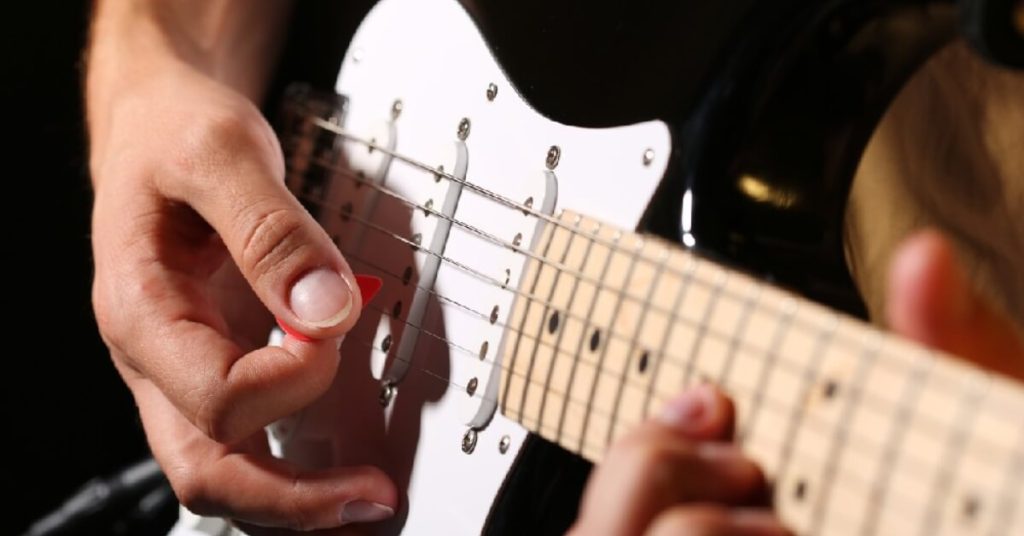Learning to play an instrument is a great skill to pick up at any age. The electric guitar can be a fun and exhilarating experience for anyone, from young kids new to the world of music to retired adults looking for a fun hobby. It can be difficult to know what to look for when buying one, though. There are important factors to keep in mind when buying an electric guitar to ensure you find one that sounds and looks like you want it to.
People wanting to learn how to play the guitar often have a decision to make right off: “Do I learn acoustic or electric?” Both have their benefits, and both make great music, but they are also different in a few ways that could affect your choice.
Electric guitars may seem more complicated because of all the electronic features, but most people find them to be easier to play. This is because acoustic guitars tend to be heavier, and the strings are higher above the frets than they are on electric guitars.
Learning either will make it easier to learn the other once you have it down. This electric guitar buying guide can help you through how to choose the right instrument and what you need to know.
Electric Guitar Styles
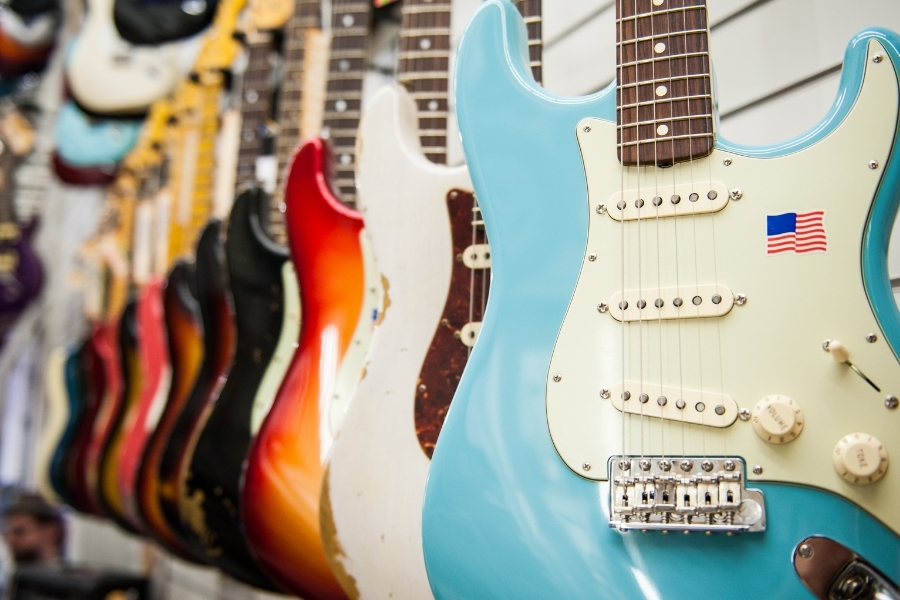
There are several different types of electric guitars. Choosing one that works for you can make all the difference in your comfort level, playing style, and in meeting your music goals. Here are a few of the most popular styles you can choose from:
Jazz Style
Jazz-style electric guitars give a semi-acoustic sound with natural resonance and big, warm, clean tones. These are popular for jazz, of course, but also for some blues and indie genres of music. Wes Montgomery, George Benson, and Pat Metheny are among the greats who played electric jazz guitars.
Telecaster Style
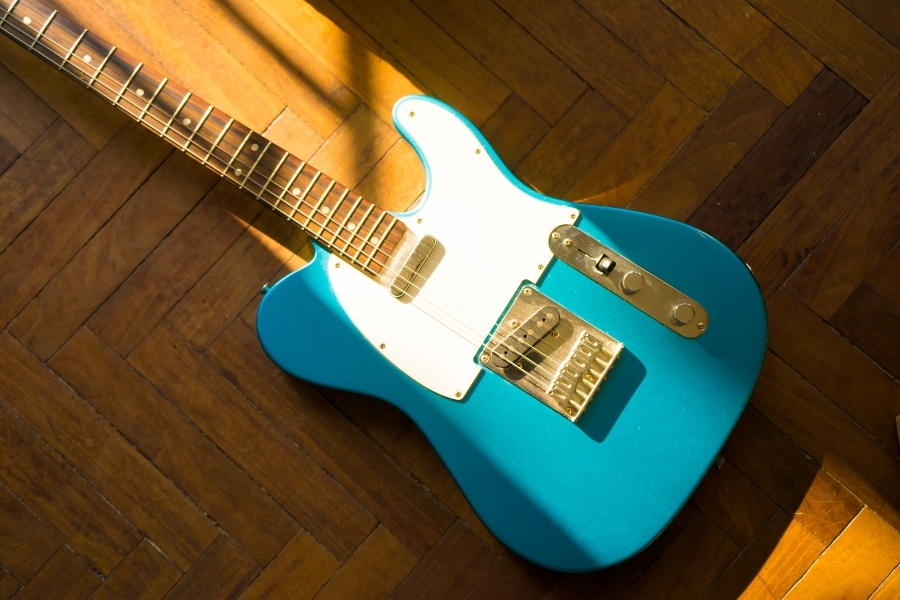
The Telecaster style is a well-known Fender guitar shape with a twangy sound that you’ll recognize in a lot of indie or country music. It’s designed to give a rounded and bassy sound with clarity and punch that fits many playing styles. Brad Paisley, Muddy Waters, and Keith Richards are but a few famous Telecaster players.
Stratocaster Style
This is one of the best-known electric guitar styles worldwide and is famous for its comfort and versatility. Strats have been used by many famous guitarists, including Jimi Hendrix and Stevie Ray Vaughan, and it’s safe to say that blues or rock and roll wouldn’t sound quite the same without their influence.
There are many more styles, so make a trip to your local music store to check out all the options. It’s a fun and exciting experience to discover the huge variety of guitars available.
What to Look for When Buying an Electric Guitar
There are certain qualities and features to look for when buying an electric guitar. Some of them have a significant effect on the instrument’s sound, but others are more about style.
New players should check out these different types to find the perfect guitar to fit them. Here are a few top features to keep in mind.
Electric Guitar Body Types
There are three main body types to choose from when selecting an electric guitar. Each type has its own unique characteristics and features. These include:
Hollow Body
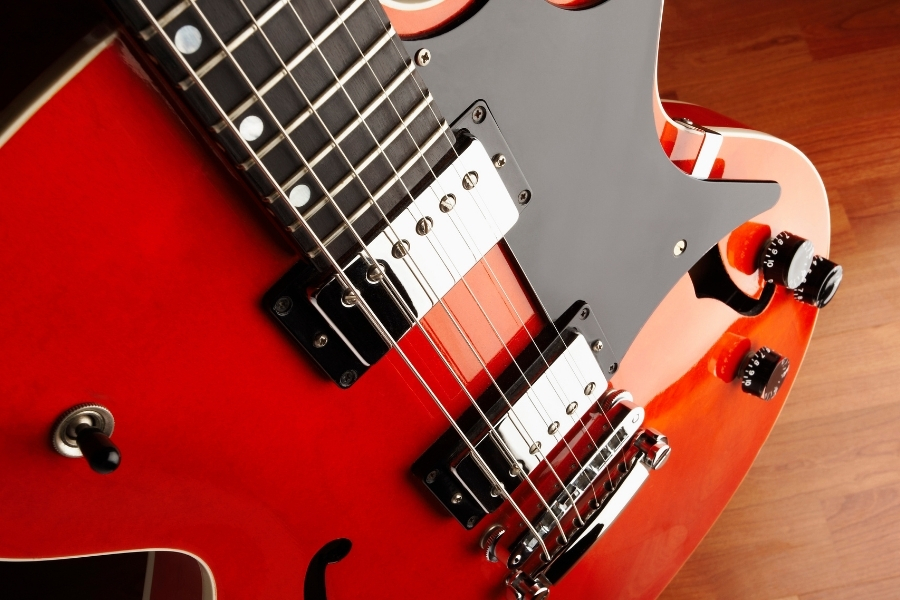
Hollow-body guitars, as indicated by the name, have hollow bodies – not unlike those of acoustic guitars. The hollow design produces more resonance than other guitar body types. Jazz guitarists are typically drawn to these types of electric guitars because of the fuller, richer, deeper bass sound they produce.
Semi-Hollow Body
The semi-hollow body also produces more resonance, like the hollow body, but it is designed with a solid center wood block. This is installed to add stability and sustain and prevent feedback.
Blues musicians often play on semi-hollow body electric guitars because of the warm sound they produce, but many other types of musicians use them, such as jazz musicians and punk rock players.
Solid Body
The solid-body type is the most common choice for musicians. It is made from wood and can vary from single-pickup models to multi-pickup styles with several different electronic options. Solid-body guitars don’t produce as much resonance as hollow-body guitars, but the materials used to make them still affect the instrument’s sound.
No matter which body type you choose from, it’s important to know your options. These styles aren’t set in stone, either: You can play great music on any of them.
Tonewood Type
The wood that the electric guitar is made from has a significant impact on the sound the strings produce. You can narrow your options by matching the type of wood to the sound you want from your guitar. Here are a few different types of wood you can choose from:
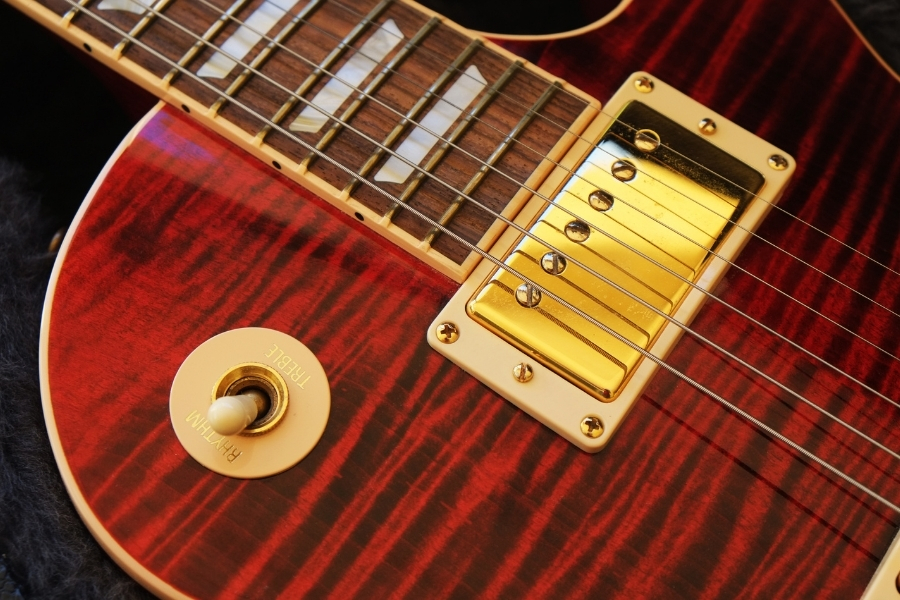
- Maple
This is one of the most common wood types. It’s extremely hard and dense, with a bright tone. The hard quality of maple accentuates the trebles in the sound. - Ebony
This is a hard, dense wood as well, but it is almost entirely black and has a smooth, silky feel. Ebony is typically used for fretboards on more expensive guitars. - Mahogany
This strong, resonant wood is used for many different electric guitar-manufacturing parts. Mahogany is a rich brown color and not very hard, so it is often used in combination with other types of wood, and it emphasizes midrange and bass frequencies for a more mellow tone. - Ash
This is a common material for solid-body guitars because it is harder and more resonant than mahogany. Ash gives a bright tone and a defined midrange sound.
These are only a few of the many wood options available for electric guitars. Talking with a music expert can help you determine what type of wood is best for the music style you want at your specific level.
Guitar Necks
Guitar manufacturers make necks from specific types of wood that differ from the rest of the body to achieve a particular sound. Some of these woods include rosewood, basswood, or some of the other wood types previously listed.
The neck joint affects the electric guitar’s tone, so it must be carefully designed by setting it into the body, bolting it on, or integrating it through the rest of the body. A musical instrument expert can help you determine which neck profile and style will work best for you.
There are many different features to electric guitars, and a wide range of combinations that can get you to the sound you’re after. Keep these tips and features in mind to find the perfect guitar for you.
Our Team of Musicians Can Help Pick The Right Electric Guitar For You!
Learning a new musical skill can be daunting, as can buying an electric guitar for the first time. Sloan School of Music has assembled a staff obsessed with playing great music, knowing about instruments, and teaching their skills to students of all ages and levels.
We are conducting private and group lessons online and at our two Maryland locations. Contact us today for additional information or to learn more about our retail electric guitars and other musical instruments.
Buying an Electric Guitar FAQs
What Are the Key Factors to Consider When Buying an Electric Guitar?
When you buy an electric guitar, think about the style (like Jazz, Telecaster, and Stratocaster), body type (hollow, semi-hollow, solid), wood used (like Maple, Ebony, Mahogany, Ash), and the neck. These things really affect how the guitar sounds, how easy it is to play, and how good it is for different kinds of music.
How Do Different Electric Guitar Styles Influence Playability and Sound?
Electric guitars vary in style, sound, and playing method. Jazz guitars offer a semi-acoustic tone suitable for jazz and blues. Telecasters have a distinctive twang ideal for indie or country music. Stratocasters are favored for their versatility and comfort across genres such as blues and rock and roll.
What Are the Differences Between Hollow Body, Semi-Hollow Body, and Solid Body Electric Guitars?
Hollow body guitars are like acoustic ones. They have more echo and a deep sound, great for jazz. Semi-hollow body guitars also echo but have a solid wood block in the middle for steadiness. Blues players like them. Solid body guitars are all wood and very popular. They work for many kinds of music.
How Does the Type of Wood Affect an Electric Guitar's Sound?
The wood used changes how an electric guitar sounds. Maple is tough and makes a bright sound. Ebony, also tough, gives a smooth feel in expensive guitars. Mahogany brings out the middle and low sounds for a soft tone. Ash, found in solid guitars, makes a clear sound with strong middle tones.
What Should Beginners Know About Electric Guitar Necks and Their Impact on Playing?
Consider neck material and attachment style when picking a guitar, as they impact tone and playability. Woods like rosewood provide distinct sounds, while neck joints (set-in, bolt-on, or neck-through) also affect sound. Opt for a comfortable neck shape that matches your music style.
How do I choose an electric guitar for beginners?
Consider playability, versatility, budget, and preferred sound when choosing an electric guitar as a beginner. Opt for comfortable, multi-genre suited, cost-effective guitars that produce sounds you love.
How much should I pay for an electric guitar?
Electric guitar prices vary. Beginners can find quality guitars from $200 to $500. Intermediate ones cost $500 to $1,000, and professional guitars go above $1,000. Consider budget, quality, and needed features.



